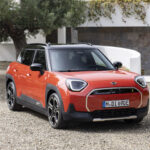
Blue sky (tick), blue ocean (tick), BlueMotion (tick); Volkswagen ticked all the above boxes when it took a cohort of motoring media members on the Think Blue Challenge recently to test its record on sustainable motoring.
Volkswagen Group Australia amassed a bunch of its fuel efficient vehicles for the writers to test their driving ‘lite’ on two 20 kilometre loops around La Perouse, Maroubra and Botany in south-eastern Sydney.
As a carbon neutral event, all greenhouse gas emissions arising are being offset by tree planting through Carbon Neutral.
Vehicles included were the up!, the one litre three-cylinder five-speed manual town runabout; the Golf 103TSI DSG automatic, the seventh generation Golf and present world car of the year; the Passat 130TDI DSG automatic wagon and the Caddy TDI 250 five-speed manual Maxivan.
On hand to offer fuel saving tips to the scribes was former rally champion Ed Ordynski, who these days spends his time with his foot lightly on the accelerator pedal testing vehicles, among other things, for fuel efficiency. Ed had done the Challenge at an earlier date.
Each vehicle employed to some extent VW’s BlueMotion technology, including stop/start engine technology, brake energy recuperation, gearshift recommendation, intelligent thermal management and coasting function.
ED’S DRIVING TIPS AND RESULTS:
VW up!
Keep the revs low, be in tallest gear possible with wide open throttle. Second guess the gearshift recommendation to gain extra advantage. Considering the engine’s one-litre capacity the up! was just that, it was up for anything this city traffic shoved its way.
The gearshift recommendations were hard to fathom but with more road time perhaps would have become more obvious. VW puts the official urban fuel consumption figure of the up! at 6.1 litres per 100 kilometres. My Challenge figure was 4.0, Ed’s figure, 4.0
Golf 103TSI DSG
Use the DSG transmission in manual mode, keeping the revs low with small throttle opening. That was easier said than done. It was hard to keep the turbo from piping up and gulping up the fuel. VW consumption figure 6.3; my Challenge 6.1; Ed’s, 5.0
Passat 130TDI DSG wagon
With a full suite of BlueMotion systems, at Ed’s suggestion as an experiment, I stayed in automatic mode, letting the powertrain fend for itself.
However, when coming to a stop, say at traffic lights, the foot was completely lifted off the accelerator pedal to minimise throttle position and engage coasting mode which automatically declutches, the vehicle momentum doing the rest to save fuel. VW official consumption figure 6.4 L/100 km; my Challenge 5.8; Ed’s, 5.1.
Caddy TDI 250 Maxivan
As diesel powered, maintain minimum throttle position to save fuel. I became stuck behind a stop/start garbage truck on double white lines (no overtaking) which did not help my fuel economy cause. VW figure 6.0 L/100 km; my Challenge 6.0; Ed’s, 5.3.
VW official average consumption figure was 6.2 L/100 km; my Challenge average 5.5 l/100 km; Ed’s, 4.9.
Let me say, at the end of the day, I wasn’t the first among equals, neither was I the last – short on execution, maybe, but now long on knowledge about driving to save fuel and, hopefully, the environment.
MODEL LINE-UP
VW up! 1 litre 5sp manual $14,990
VW Golf 1.4 litre 103TSI DSG automatic $31,990
VW Passat 2 litre 139TDI DSG automatic wagon $46,490
VW Caddy 1.6 litre TDI 250 Maxivan $26,650
Note: These prices do not include government or dealer delivery charges. Contact your local Fiat dealer for driveaway prices.











